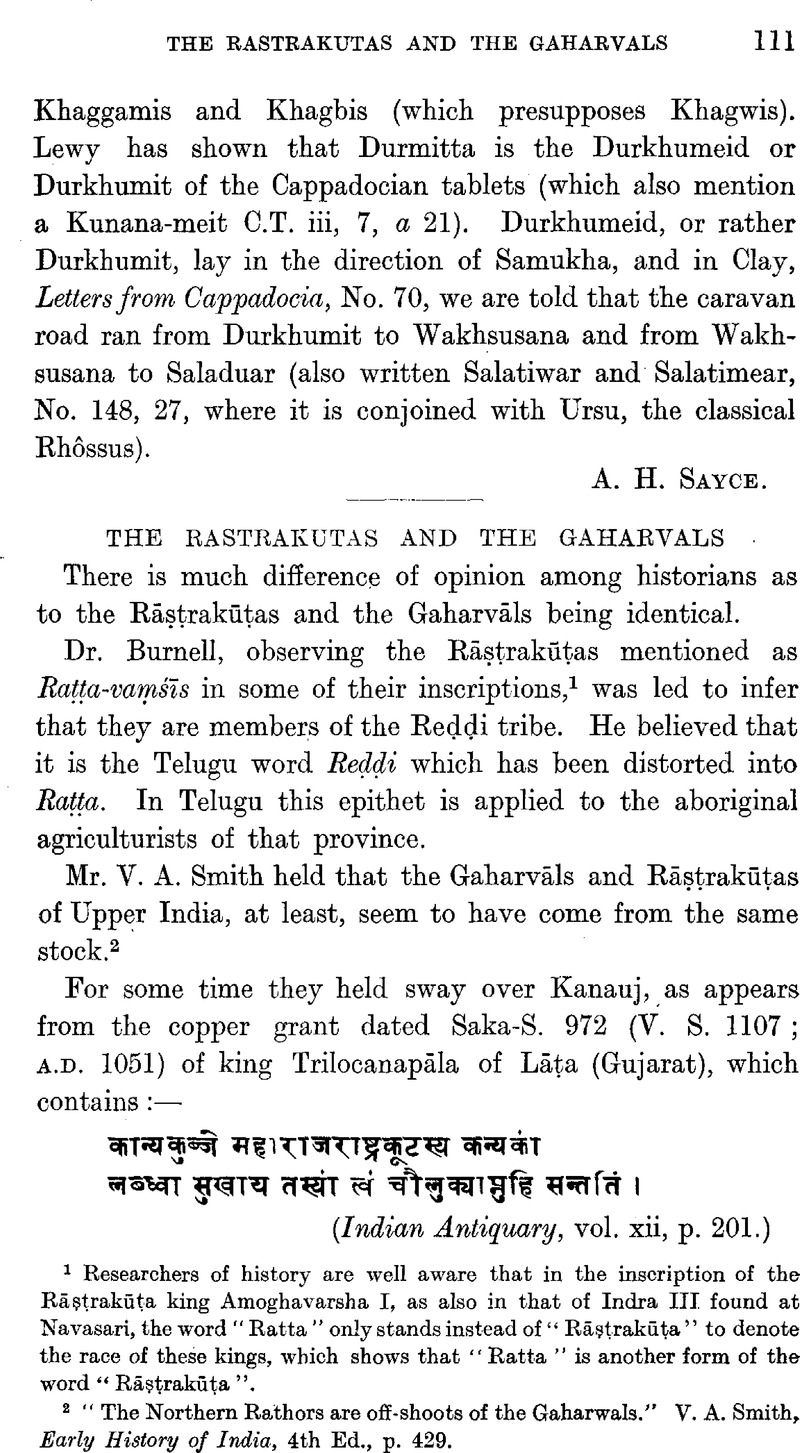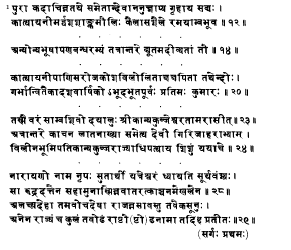No CrossRef data available.
Published online by Cambridge University Press: 15 March 2011

page 111 note 1 Researchers of history are well aware that in the inscription of the Rāṣṭrakūṭas king Amoghavarsha I, as also in that of Indra III found at Navasari, the word “Ratta” only stands instead of “Rāṣṭrakūṭas” to denote the race of these kings, which shows that “Ratta” is another form of the word “Rāṣṭrakūṭas”.
page 111 note 2 “The Northern Rathors are off-shoots of the Gaharwals.” Smith, V. A., Early History of India, 4th Ed., p. 429Google Scholar.
page 112 note 1 In fact, Sunday falls on this date.
page 112 note 2 In some inscriptions of the Solankis (Caulukyas), in the Dvyāṡraya-Kāvya of Hemacandra, and in the Vastupāla-Carita written by Jina Harṣa Gaṇin, the Caulukya race is said to have sprung from the Lunar stock. But in the Vikramāṅkadeva-Carita, written by Bilhaṇa, the origin of the race is held to be from Brahma, which view is also supported by the inscription of the Solanki king Kumārapāladeva.
In the Mount Abu inscription dated V.S. 1377 of the Chauhān Lumbha the Chauhān clan is stated to belong to the Lunar stock; in the inscription of the time of Visāladeva IV, in the Hammīra-Mahākāvya, and in the Pṛithvī-rāja-vijaya this clan is said to be of the Solar stock; while in the Pṛithvīrāj Rāso it is mentioned as having sprung from Agni, the Fire God.
Similar is the case of the other clans.
page 113 note 1 This fact is borne out by the inscription of the Yādava king Bhīma, dated V.S. 1442, found at Prabhāsa Paṭṭana, which contains the words:—
page 114 note 1 
page 115 note 1 This Lakhaṇapāla was seventh in descent from Candra. By assigning twenty years to each generation we arrive at about the same period which is assigned to the Gaharvāl Candra of Kanauj.
In the United Provinces this Lakhaṇa is generally supposed to be a nephew of king Jayacandra, and I think that the author of the Rāso has also somewhere in his work mentioned him as such.
page 116 note 1 [This etymology seems to require explanation.—ED.]
page 118 note 1 Epigraphia Indica, vol. ix, p. 304.